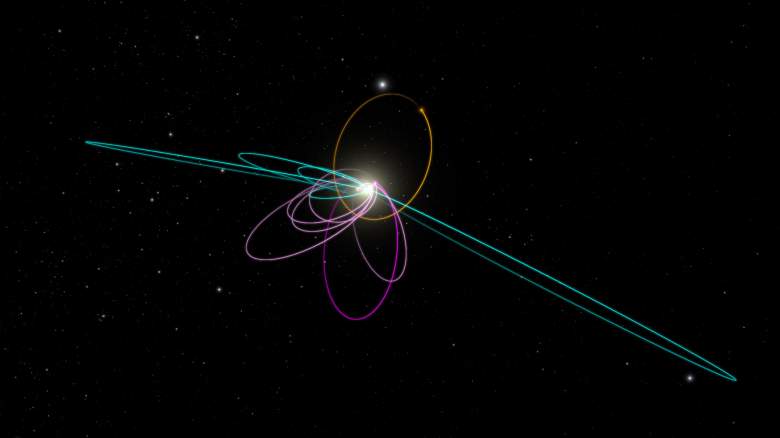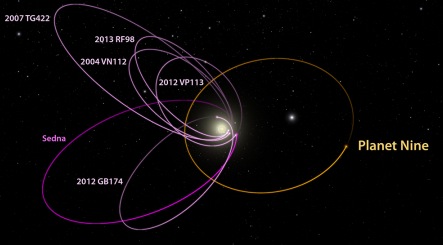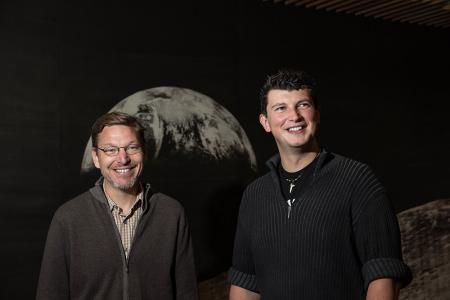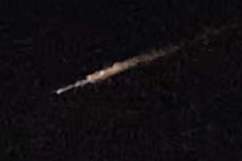Scientists now say there’s incredibly strong evidence of a ninth planet in the solar system. They’ve long suspected there was a “Planet Nine,” also known as “Planet X,” but new research makes it even more of a possibility. One of the scientists involved in the new findings is Mike Brown, the same scientist who dethroned Pluto from its previous status as the solar system’s ninth planet.
Here’s what you need to know.
1. Planet X May Be Real
Mike Brown and Konstantin Batygin, both from Caltech, analyzed the motion of a group of small objects in the outer parts of our solar system and found that an unseen body must be influencing them — likely a massive planet. The objects are clustered in the Kuiper Belt, far, far away from Earth. The Kuiper Belt is beyond Neptune, a field of icy objects and debris.
The evidence was published in The Astronomical Journal. You can read the study at this link.
Mike Brown, Caltech professor and one of the researchers who made the discovery, said:
There have only been two true planets discovered since ancient times, and this would be a third. It’s a pretty substantial chunk of our solar system that’s still out there to be found, which is pretty exciting.”
Planets are often discovered by observing the gravitational pull of nearby bodies and inferring their location. In fact, back in the 1840s, that’s exactly how Neptune was discovered. Irregularities in the orbit of Uranus could only be explained by the influence of the gravity of a more distant planet. Astronomers began calculating the planet’s location based on these observations, which led to Neptune’s discovery. Neptune was the last official planet discovered in our solar system.
2. Planet Nine Could Be More Massive Than the Earth And Located Deep in Our Solar System

This diagram shows Planet Nine’s predicted orbit (in orange), next to the orbits of the six most distant known objects in the solar system (in pink) and Neptune’s orbit (in magenta). Calculations suggest Planet Nine’s orbit should cause additional objects to orbit perpendicular to Nine’s plane. Five objects (whose orbits are shown in blue) fit this expectation. (Caltech/R. Hurt (IPAC))
According to the study, the unusual orbits of the objects in the Kuiper Belt can be accounted for by a massive planet whose orbit is in the same plane. Planet Nine is estimated to have a mass that’s about 10 times that of Earth and an orbit that is 20 times farther from the sun on average than Neptune’s, according to Caltech. That means it would take Planet X 10,000 to 20,000 Earth years to make just one complete orbit around the sun. It would also mean that the planet was so far away, it would reflect very little light from the sun and be very hard for telescopes to see.
3. The Planet Hasn’t Actually Been Seen Yet, But the Odds That It’s Real Are Very High

Planet X could be 10 times more massive than Earth. (Caltech/R. Hurt (IPAC))
Astronomers haven’t actually spotted the elusive planet yet. But the odds that it’s real are very high. According to the journal paper, the odds that the cluster of objects would have their unique orbit just by chance are only .007 percent.
And what is this orbit? The six most distant objects in the Kuiper Belt follow elliptical orbits that point in the same direction in physical space. Since they travel at different rates and their outermost orbits move around the solar system, this is a very unlikely coincidence. Brown explained it as being like having six hands on a clock moving at different rates, but always being at the same place when you look up. The orbits are also all tilted 30 degrees downward in the same direction relative to the eight planets’ plane. This also can’t happen randomly, indicating another object is exerting enough gravitational force to shape their orbits.
If Planet Nine is in the most distant part of its orbit, then it could be found by the world’s largest telescopes, such as at the W.M. Keck Observatory or the Subaru Telescope in Hawaii. If it’s in a closer part of its orbit, than many telescopes could find it, Caltech reported.
4. Scientists Have Been Searching for Planet X for Years

This diagram shows a closeup of Planet Nine’s orbit around the sun, in conjunction with Neptune’s orbit (magenta) and the orbits of the six most distant known objects in the solar system (in pink). These six objects’ orbits are affected by Planet Nine’s massive size. (Caltech/R. Hurt (IPAC))
Scientists have long suspected that Planet X existed. For example, two years ago, Scott Sheppard, an astronomer with the Carnegie Institution of Science in Washington D.C., and Chad Trujillo, a former postdoc of Brown’s, had published their own paper suggesting a large planet might be on the outskirts of our solar system, Caltech reported.
As far as Planet Nine’s origins, scientists believe that the early solar system began with four planetary cores that grabbed gas around them, forming the four gas giants: Jupiter, Saturn, Uranus, and Neptune, according to Caltech. Collisions and ejections over time shaped and moved them to where they are today. Planet Nine could have been created at the same time and got too close to Jupiter or Saturn, getting ejected to its more distant orbit.
5. One of the Scientists Who Made the Discovery Also “Killed” Pluto’s Planet Status

Caltech professor Mike Brown and assistant professor Konstanin Batygin wrote the paper that presented the amazing findings on Planet X. (Lance Hayashida/Caltech)
Interestingly, Mike Brown, one of the two scientists to make the discovery about Planet Nine is also the scientist who removed Pluto’s status as the ninth planet. Planet Nine would be about 5,000 times the mass of tiny Pluto. Unlike Pluto, if Planet Nine is actually observed, it should be large enough that there won’t be any debate about whether it’s a real planet. In fact, Planet Nine would be so large that it dominates a region larger than any other planet in the solar system, making it “the most planet-y of the planets.”
Brown wrote a book about the reclassification of Pluto called “How I Killed Pluto And Why It Had It Coming.” He also teaches a free online class on Coursera called “Science of the Solar System.”
Batygin, who co-wrote the paper with Brown, specializes in planetary astrophysics, particularly the formation and evolution of the solar system, the evolution of exoplanets, and the processes involved in planetary interiors and atmospheres.

